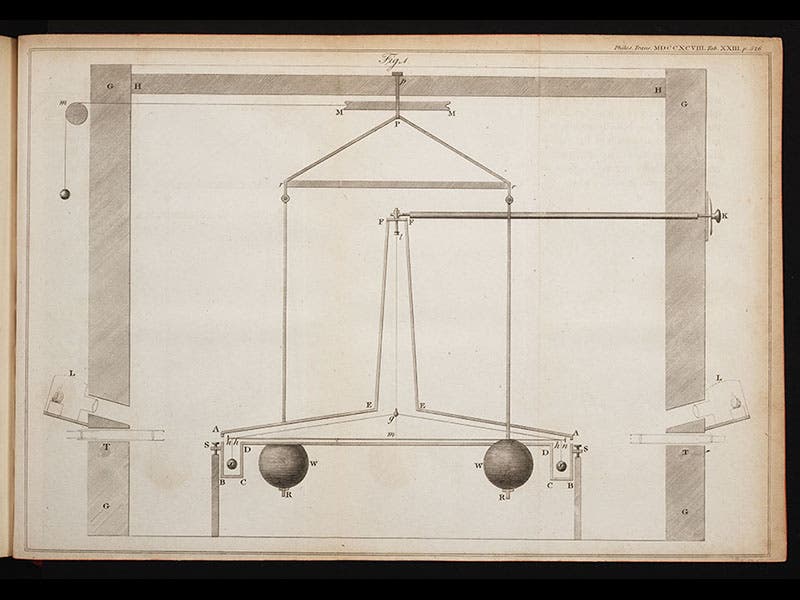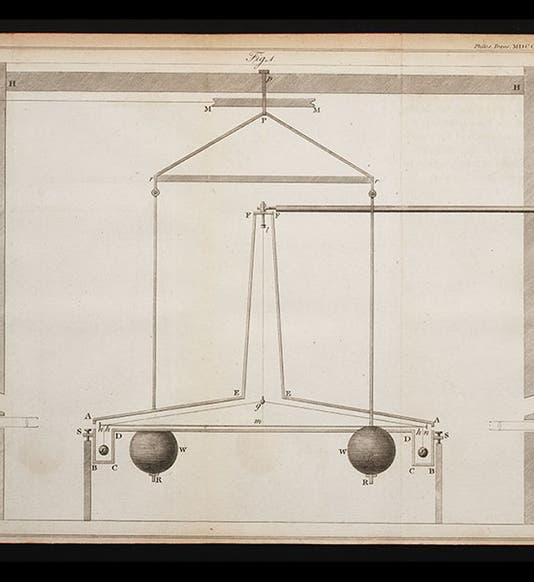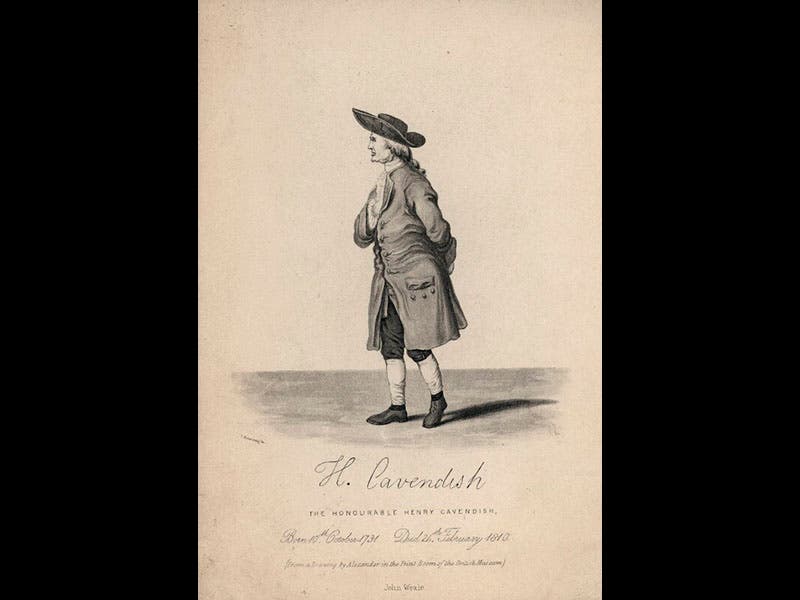Scientist of the Day - Henry Cavendish

Linda Hall Library

Linda Hall Library
Henry Cavendish, an English chemist and physicist, was born Oct. 10, 1731. Cavendish was an odd fellow, painfully shy to the point of avoiding almost all human contact. But he was a brilliant experimental scientist. He is perhaps best known for discovering the gas hydrogen in 1766 (which he called "flammable air"), but we will discuss here his other major achievement: measuring the density of the earth. Fellow Englishman John Michell (1724-1793) had invented and built a device he called a torsion balance. It consisted of two lead spheres, suspended from the ends of a long rod. The center of the rod hung from a thin wire, whose twisting (torsion) could be measured. Michell planned to measure the gravitational attraction between the spheres on the torsion balance and two larger stationary spheres. Michell, however, died before he could undertake the experiment. He gave the torsion balance to another natural philosopher, who in turn gave it to Cavendish.
Cavendish made a number of improvements in Michell’s apparatus. He installed it in a small closed room, and he arranged a way to swing the larger spheres into position without entering the room and inducing air currents. He also found a way to measure the amount of twisting from outside the room, using micrometers mounted in the wall, and he even managed to illuminate the scales from the outside, so the room never had to be entered at all. His published diagram of his experimental set-up shows us all the details (first image). A model made from this diagram is on display in the Science Museum, London (third image).
Cavendish took a series of measurements of the gravitational attraction between the spheres in the late 1790s. He was able in 1798 to calculate that the earth has a density of 5.48 times the density of water, very close to the modern value of 5.52. Using this information, later scientists were able to calculate the mass of the earth, and also something called “Big G,” the gravitational constant, which figures in Newton's law of gravitation. But Cavendish himself never calculated either of these quantities.
Cavendish published his results in a milestone paper, "Experiments to determine the Density of the Earth", in the Philosophical Transactions of the Royal Society of London, 1798, volume 88. We have several sets of this journal in the Library's serials collection.
The engraved drawing of Cavendish is in the National Portrait Gallery, London (fourth image).
Dr. William B. Ashworth, Jr., Consultant for the History of Science, Linda Hall Library and Associate Professor, Department of History, University of Missouri-Kansas City. Comments or corrections are welcome; please direct to ashworthw@umkc.edu.








